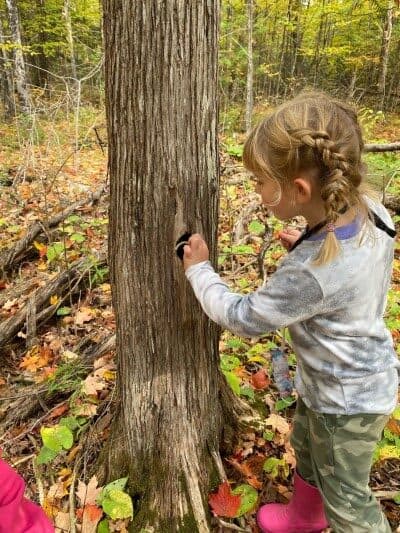Many of us take for granted a material on which the wisdom of cultures has been written and shared for generations …paper. The surprisingly simple art of making paper is both fun and educational. In this program, students learn how plant material is transformed into a pulp that is then flattened and dried to create the paper we are familiar with today. Using recycled paper and various foraged plants, students create beautiful, handmade paper that they can later use for labels, cards, or journals. Please note: This program requires a minimum of 1 adult volunteer for every 4-5 students. Teachers and/or volunteers must be ready to supervise students outdoors while groups take turns rotating through the papermaking process. Pre-prepared outdoor activities (i.e. scavenger hunt, playscape) are provided.
Environment Centre Program
The Joy of Papermaking
Resources:
Want to learn more about Trees? This helpful guide is a great place to start!
https://kids.nationalgeographic.com/books/article/field-guide-trees
Post Visit Activities: (if applicable)
Learn more about trees and all the many gifts they provide. Create a Neighbourhood
or Schoolyard Tree Guide that highlights the trees and plants growing in your
community.
Create a Nature Journal and use your homemade paper as a cover!
Use your handmade paper to create a greeting card or note for someone special.
Grade(s):
Subject(s):
Season(s):

Back to All Programs
Curriculum Links:
Science & Technology
• Grade 3 - Life Systems: Growth and Changes in Plants
• Grade 5 - Earth and Space Systems: Conservation of Energy and Resources
* Curriculum links for this program are based on "The Ontario Curriculum, Grades 1-8:
Science and Technology"
The Arts
• Grades 3-5 - Visual Arts: Creating and Representing
Seasonal Availability Grade(s)
F, W, S 3-5
* Curriculum links for this program are based on "The Ontario Curriculum, Grades 1-8:
The Arts"
* Curriculum links for this program are based on “The Ontario Curriculum, Grades 1-8: Science and Technology“
Feel free to contact us about modifying programs to suit older or younger students.
Pathway to Stewardship & Kinship
Landmarks
8. Make Some Nature Art
14. Learn New Outdoor Activities
15. Try: Gardening, Feeding Birds, Finding Critters, Exploring
17. Try a New Sport, Craft, and Survival Skill
18. Celebrate a local natural area.
19. Explore Biodiversity
United Nations Sustainable Development Goals (SDGs)

